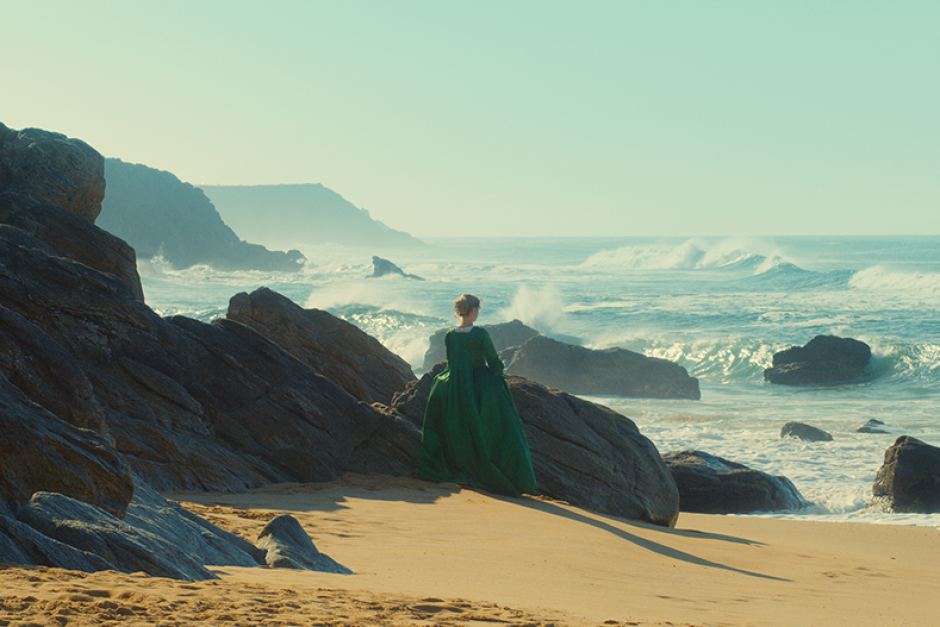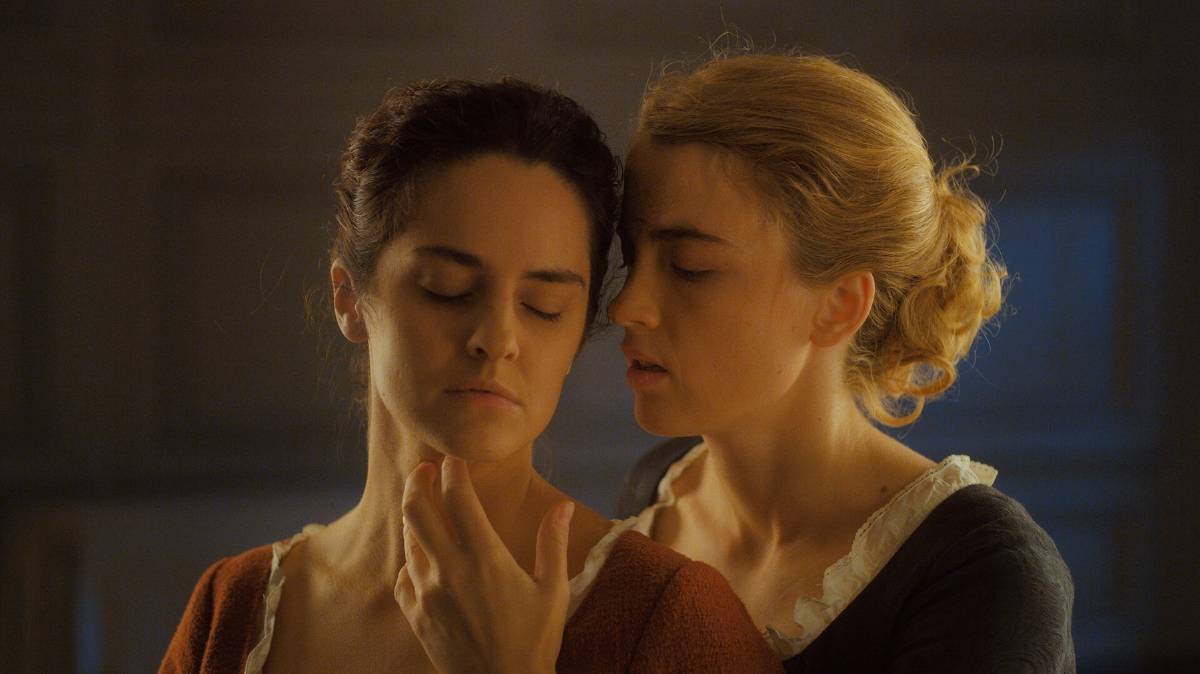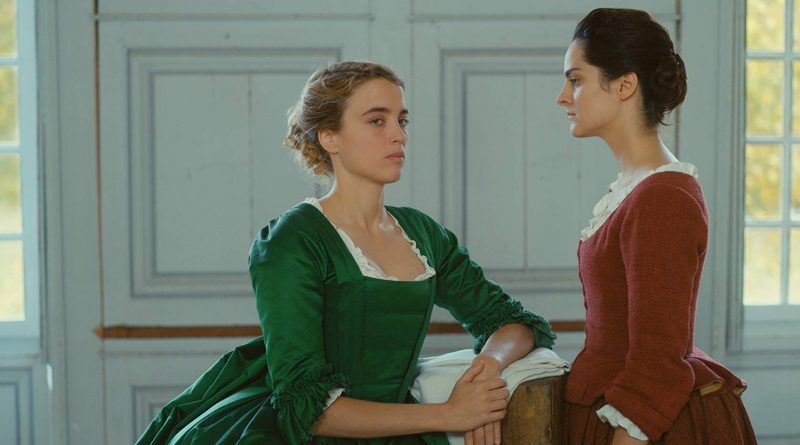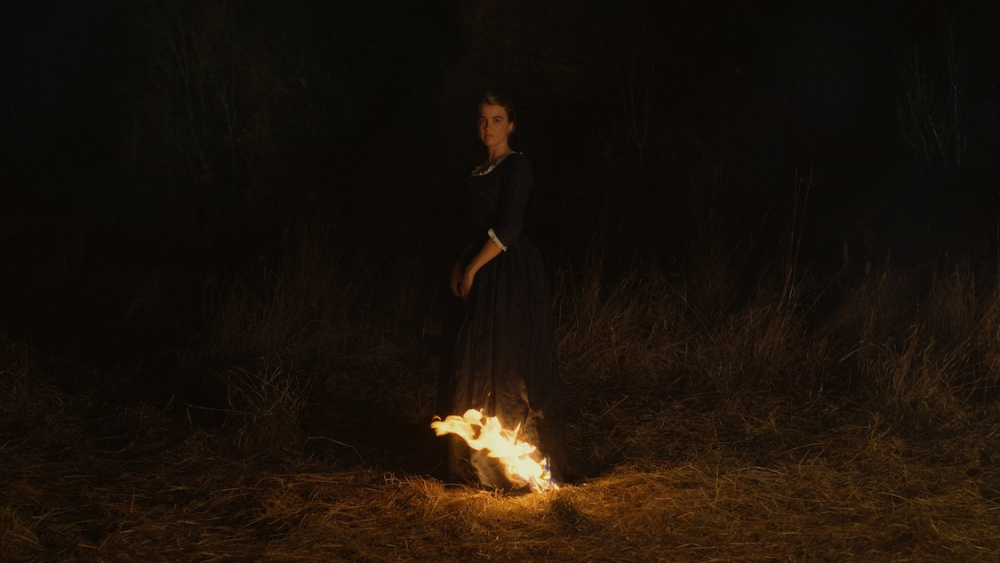Great art contains multiple entry points and angles of interpretation, and Celine Sciamma’s Portrait of a Lady on Fire exemplifies that maxim more than most. In fact, you need look no further than the several meanings of its title to get a sense of its many multitudes. At various points in its running time, Sciamma’s film features both a portrait depicting a lady with her dress aflame, and a portrait of that same lady whose canvas itself catches fire. The subject of this portrait is metaphorically on fire as well, as she burns with an inner light stoked by an engagement with the arts and the world around her. She’s also burning with a passion that has no outlet in late 18th century France, since it involves a romantic love for a member of her own sex.
Fire is something that is inherently fleeting, forever at risk of being extinguished – a regrettable outcome indeed if you consider it a metaphor for the inner life of a woman. There are two women at the centre of this story, both of whom appear in portraits and both of whom possess that potentially fleeting sense of internal and external combustion, with a third who plays a supportive but secondary role, and a fourth who enforces the status quo. In fact, Portrait of a Lady on Fire has such a scarcity of men that for a time, it seems to be a cinematic experiment on par with George Cukor’s 1939 film The Women, which contains nary a male face for its entire running time.
While that film could scarcely pass the Bechdel Test, since the women’s discussions mostly revolve around men, men only haunt the conversations between the characters in Portrait. These women – or ladies, to use the parlance of the film – lay bare their innermost thoughts and desires, from the playful and superficial to the deeply personal. They don’t talk about men, but the oppressive strictures of a male-dominated society hang over their words, ready to snuff that flame sooner or later. Sooner, probably.
Marianne (Noémie Merlant) is a portrait artist who has won her current assignment, on the beautiful shores of Brittany, only after a male painter has failed at it. A countess (Valeria Golino) has purchased Marianne’s services to paint a portrait of her daughter, Heloise (Adèle Haenel), as a wedding present to her future husband, a Milanese man Heloise has never met. Marianne’s predecessor was unable to complete the task because Heloise refused to pose for him; Marianne is greeted ominously by a canvas painted from the neck down, and torn away from the neck up.
Marianne at first sees little of her new subject, who keeps to herself. But she starts to crack Heloise’s hard shell on their walks together, and a mutual respect, edging towards attraction, develops between them. It’s clear Heloise has no desire to marry this man she doesn’t know, or possibly any man, but neither is she able to disappoint her mother’s and society’s expectations of her. As her work on the portrait progresses, Marianne also wonders if she isn’t conspiring with the wrong woman – an equation complicated by the stirring of her own feelings toward Heloise.
If Portrait of a Lady on Fire seems like a highly personal work, it is. Sciamma had been in a relationship with Haenel, the actress who plays Heloise, and though that relationship ended amicably before filming even began, it’s easy to see how Haenel remains as a muse for her director. You can see it in how the camera observes Heloise, but similarly can never grasp her. There are shots designed to accentuate the ways in which Heloise is ephemeral, as she sometimes literally disappears from view. Looking at the larger themes of the film, it’s a contemplation of how anything that’s beautiful – how any aspect of life, really – is impermanent, and how we must appreciate it in the limited time that we can.
It’s a gorgeous film. It’s almost overkill for Sciamma to set the beauty that grows between Heloise and Marianne against a backdrop of crashing waves and chalk-coloured cliffs. Her compositions are painterly, which is certainly appropriate to the film’s themes. Portrait of a Lady on Fire is in conversation with multiple art forms, as music assumes an important textual role in the narrative, while cinema is, of course, only subtextual, this being the late 18th century. A standout musical moment involves a group of women by a bonfire spontaneously breaking into song, their harmonies accompanied by the percussion of their clapping hands. That this moment has no logical precursor in the narrative is just one of the instances in which Sciamma straddles the line between realism and expressionism. As stimulating as it is, intellectually, this is art we are designed to feel.
As central as Merlant and Haenel are to the effectiveness of this film, and as emotionally revealing as their performances are, it’s their companion/conspirator who has perhaps the most profound role in explicating the humanism at the film’s core. Joining the two women, especially when Heloise’s mother is away on a five-day sojourn, is the servant Sophie, played by Luana Bajrami. When first introduced, Sophie is docile and obedient, the type of character who exists on the margins of these types of stories for the purpose of realism only. She never gets her own agency or storyline. But when the countess does leave, she easily slips into equal footing with the other women, illustrating the unspoken belief among all three of them that women are not defined by their station in life. Her own relationship with a man who is absent in the story leads to some of the film’s most affecting scenes, staged by Sciamma with an uncanny understanding of the potency of her imagery.
Love stories are notoriously subjective experiences, felt differently by different people depending on their own personal circumstances and responses to individual details of the narrative. The best love stories, though, are able to rise above the subjective to deliver us something universally moving. Sciamma does this while also infusing the story with art, literature and philosophy, leaving some of its most thought-provoking themes for the viewers to excavate themselves.
If having a portrait of someone is a way of possessing them, even in the most benevolent sense, then film is a particularly fortuitous medium for Portrait of a Lady on Fire. When it becomes available on DVD or for digital purchase, we can possess it and luxuriate in its beauty on repeat.



